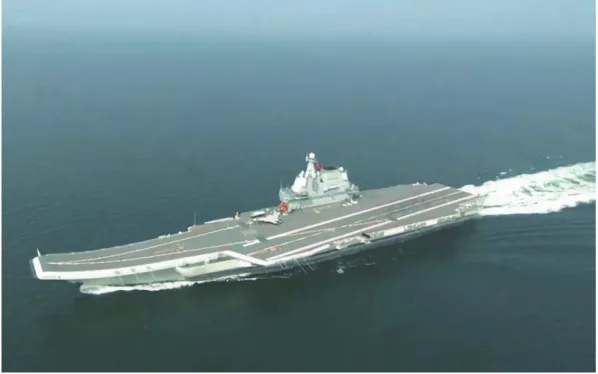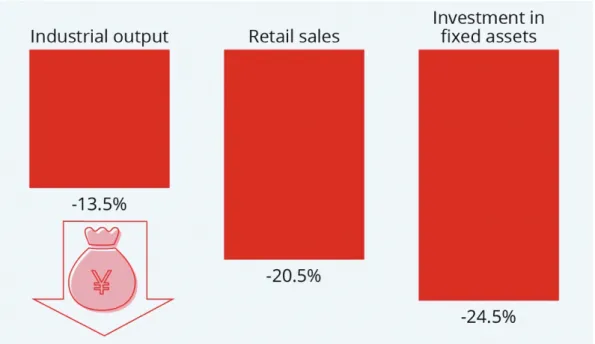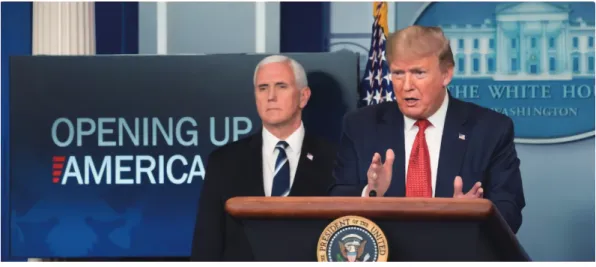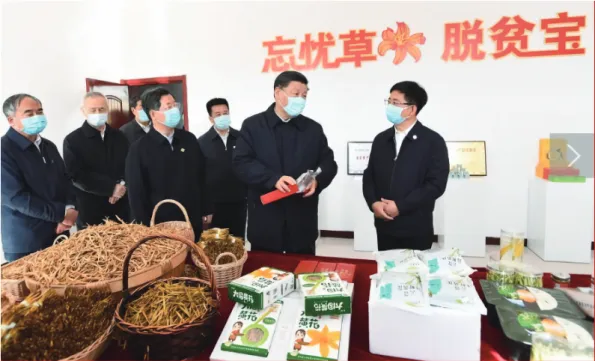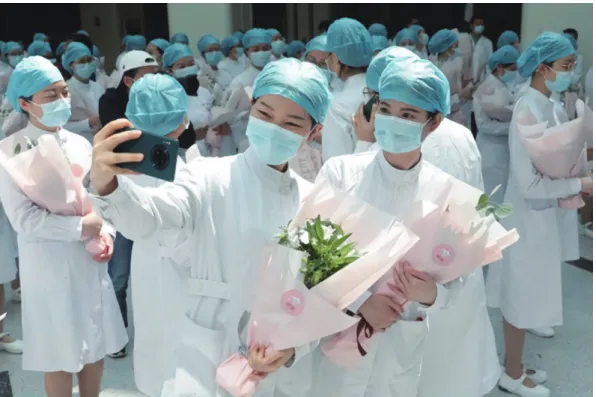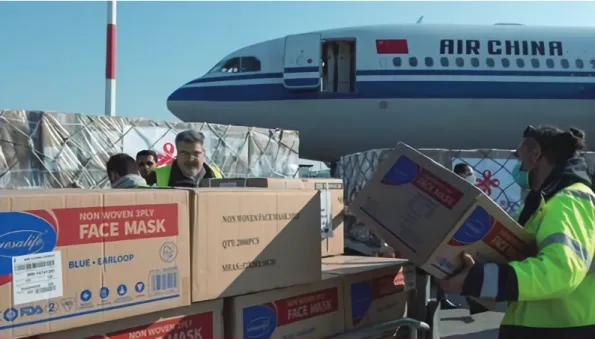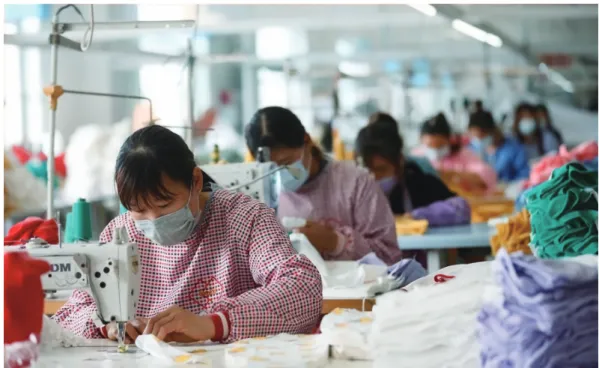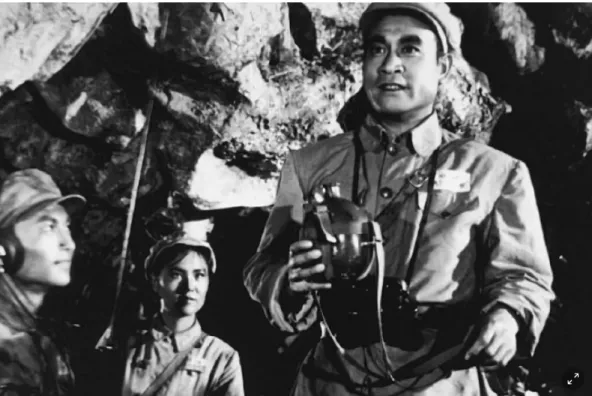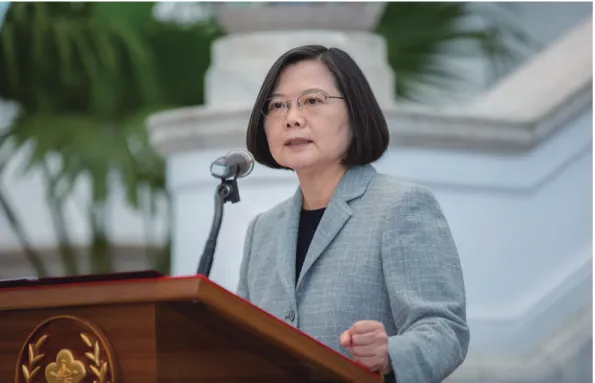The Impacts of COVID-19 Pandemic on the
Chinese Model of Governance and China’s
Propaganda
Kuo-cheng Chang
Professor and Deputy Dean, Center for General Education, Taipei Medical UniversityAbstract
The outbreak of coronavirus disease 2019 (hereafter “COVID-19”) in China since January 2020 once made China the worst-hit country as its confirmed positives and death tolls were at the top of the world. Nevertheless, the Chinese government’s rigorous control has flattened its curve of COVID-19 infection as of May 2020, which facilitates the Chinese government’s propaganda in two aspects through the massive publicity it has generated worldwide. On the one hand, the Chinese government makes use of its propaganda to strengthen domestic confidence in its achievement of combatting COVID-19. On the other hand, China also is leveraging its propaganda to argue with the Western countries not only about shifting the blame over the spread of the novel coronavirus, but also for strengthening the superiority of the Chinese model of governance; hence, using propaganda to get itself a bigger say and build a stronger image of China in future international political issues.
This paper analyzes how the Chinese model of governance is leveraged to address the COVID-19 crisis. For China, propaganda is not only a window display but also is a major part of the Chinese Communist Party (CCP)’s governance, especially on handling the outbreak of the novel coronavirus. The CCP shares the same logic on economic development and leveraging its propaganda: the economic development offers materials and resources for propaganda, and both the economic development and propaganda serve as tools for consolidating the CCP’s rule in China. The COVID-19 pandemic may have bolstered the Chinese government’s confidence in its governance, which may lead the Chinese government to have more input on its propaganda projects.
Keywords: COVID-19, China Governance, China’s Propaganda, PRC Politics, Chinese
I. Introduction
The outbreak of coronavirus disease 2019 (hereafter “COVID-19”) in China in January 2020 once made China the worst-hit country in the world. Nevertheless, the Chinese government’s rigorous control has flattened its curve of COVID-19 infection as of May 2020, which facilitates the Chinese government’s propaganda in two aspects through the massive publicity it has generated worldwide. First, the Chinese government makes use of its propaganda to strengthen domestic confidence in its achievement of combatting COVID-19. Second, China also leverages its propaganda to argue with the Western countries not only to shift the blame for the spread of the novel coronavirus, but also for strengthening the superiority of the Chinese model of governance and getting itself a bigger say with a stronger image of China in future international political debates.
This article specifically focuses on the influence of COVID-19 over the Chinese model of governance and China’s propaganda in international society. First, I will identify the characteristics of the Chinese model of governance, which will be further elaborated by how they have been thwarted by the COVID-19 pandemic.
Second, I will delineate and further analyze how the Chinese model of governance is leveraged to address the COVID-19 crisis. For China, propaganda is not only a window display but also takes a considerable part of the Chinese Communist Party (CCP)’s governance, especially in handling the outbreak of novel coronavirus. The COVID-19 pandemic may have bolstered the Chinese government’s confidence in its governance, which may lead the Chinese government to have more input on its propaganda projects.
II. The Chinese Model of Governance
The Chinese model of governance is intended to consolidate the CCP’s political dominance via the CCP-led capitalism and market economy. The CCP is fully aware that China’s economic development can elevate Chinese people’s living standards; hence, it can eliminate the threat of rebellion, as a decent, even an affluent, life will not lead Chinese people to strong dissatisfaction with the CCP; those wealthy people tend to emigrate to other countries instead of rebelling against the Chinese government
when they are dissatisfied. Moreover, it is not easy for anyone to emigrate without adequate financial backing. After the Chinese economic reform and open-up, the tremendous number of Chinese emigrants gives China a substantial stake to increase its influence on other countries’ economies, societies, and even politics.
Second, China’s economic development can accumulate national power, which further empowers China’s defense capability. Chinese assert that, to respond to external military threats, one needs sufficient budget to guarantee the development of advanced weapons, and sufficient budget comes from sufficient national power. The lesson that China has learned from the dissolution of the Soviet Union is that the Soviet Union was unable to find balance between its military and economic development. That is to say, the Soviet Union’s economic growth was dragged down by its huge military expenditures. Besides, without sufficient national economic power, keeping the newly-developed weapons and equipment continuously updated will be impossible. Moreover, the troops need plenty of training, and military weapon operating and maintenance costs often are much higher than arms procurement costs.
Figure 1. China’s First Domestic Aircraft Carrier Is Sailing for a Test
Source:〈遼寧艦加山東艦對中國意味什麼 張召忠:有這些優勢〉, December 20, 2019, Sina, <https://mil.sina.cn/sd/2019-12-20/detail-iihnzahi8778044.d.html?vt=4>.
Third, China’s economic development is a huge benefit for its international image and influence. The CCP takes pride in China’s transformation into the world’s second largest economy, which also builds up people’s affirmation of the CCP’s governance. The so-called “Beijing Consensus” has emerged, and it has been defined as a pragmatic policy to achieve “equitable, peaceful high-quality growth” and “defense of national borders and interests” in the meantime through leveraging innovations and experiments. Last, China’s economic development also enhances its power to annex Taiwan. For Taiwanese, the Chinese political system is not attractive at all, yet “Sinicization” has a magnetic attraction. Over-Sinicization, which means to take out globalization and substitute it with “Sinicization” during the process of globalization, is Taiwan’s Achilles’ heel. Theoretically, globalization is a social process in terms of more people being able to participate in emerging cross-regional activities with continuously declining constraints of geographical barriers to curb cross-regional political, cultural, economic, and social activities. Nevertheless, as China has opened its door to the world, the expansion of China’s economic power has turned Taiwan’s process of globalization into a process of “Sinicization”. In other words, the geographical barrier posted by the Taiwan Strait to impede cross-Strait political, cultural, economic, and social activities has been diminishing, which enables common Taiwanese to join more cross-Strait activities between Taiwan and China. Such a “Sinicization” process has conquered the geographical barriers between Taiwan and China; therefore, the process brings Taiwanese’s personal lives and social relationships, as well as Taiwan’s social system, closer and closer to China.
The term “Sinicization” covers economic, political, social, and cultural dimensions. Through the same language, China’s “soft power” has been gradually influencing the whole Taiwanese society in a deep and comprehensive manner, even to Taiwanese’s political ideology and international perspective. For example, most Taiwanese do not have sufficient foreign language proficiencies; therefore, their easiest way to understand the world, China, and even Taiwan itself, is from the international news reports written from a Chinese perspective. Sinicization has greatly influenced Taiwan not only because it brings institutional and material changes to Taiwanese society, but also in regards to the increase of Taiwanese’s “Chinese self-identification”.
of the Chinese model of governance. First, the CCP did not control the outbreak of CO-VID-19 well at its early stage, and people hardly can forget the loss that COCO-VID-19 has brought. The Chinese economy has been damaged by the coronavirus outbreak, too.
Figure 2. Chinese Economy Hit Hard by Coronavirus Outbreak
Source: Willem Roper, “Chinese Economy Hit Hard by Coronavirus Outbreak,” March 17, 2020,
Statista, <https://www.statista.com/chart/21135/production-and-sales-losses-in-china/>.
Second, the COVID-19 pandemic may also influence China’s military development. Although the Chinese authorities have to give more input on China’s economic resilience, China will be triggered by the COVID-19 pandemic to initiate more military provocations, which brings out two implications: one is that China’s military power is not affected by the coronavirus outbreak and the other is that the Chinese military is able to fill the possible “power vacuum” in the Asia-Pacific as the United States is struggling to stem coronavirus.
Third, the COVID-19 pandemic has damaged China’s international image. In the United States, Britain, and Australia, huge financial compensation from China is being demanded. The Western countries are seeking accountability from the CCP for the coronavirus outbreak in two issues: one is if the CCP purposely spread the coronavirus to launch biological war; the other is to identify if the CCP covered up the outbreak
and allowed people in Wuhan to travel all over the world at the beginning of the epidemic. Regarding this, the conduct of the United States is the most indicative.
Figure 3. Trump and Pence
Source: The White House, “President Trump Unveils Guidelines for Opening Up America Again,” May 13, 2020, accessed, The White House, <https://www.whitehouse.gov/>.
Last, the influence of “Sinicization” on Taiwan is decreasing. The COVID-19 pandemic has diminished the cross-Strait political, cultural, economic, and social activities, while Taiwanese’s denial to China is increasing at the same time. For China, to “reunify” with Taiwan is a vital national interest. Nevertheless, President Tsai Ing-wen’s re-election in 2020 with record 8.17 million votes may have worsened China’s anxiety about Taiwan leaning more toward separating from China.
III. The Indispensability of Propaganda to the Chinese Model of Governance
A communist party always emphasizes its propaganda. Vladimir Lenin contended that communist ideologies need to be promoted to agitate the proletariat to recognize how they are exploited, thereby to induce them to obey the leadership of “professional revolutionists,” namely the communist party, and to subvert the rule of capitalists. For a communist party, propaganda is not only developed to illustrate the ways of its governance; the propaganda itself is a way of governance. Through propaganda, a communist party can achieve the following important objectives.
A. Fortifying its “road”: the “road” is the communist party’s political guideline, which serves as the spirit to dictate the propaganda. The communist party also elevates and adjusts its “road” according to feedback from its people, allies, and enemies. Some adjustments are strategic, while others are tactical. For the CCP, its propaganda has two purposes: urging its people to be convinced of the CCP’s road and teaching its people to serve for the CCP’s road.
B. To train its cadres: a communist party sifts its cadres through their capability of receiving and promoting its propaganda. Those cadres who can draft good propaganda will be recognized as the elites to be nurtured because they know the party’s road better.
C. To distinguish between its enemies and allies: from a communist party’s perspective, “who are our enemies?” and “who are our friends?” are the main issues of revolution, and the possibility of a person to become the party’s ally depends on his or her acceptance of the party’s propaganda. Also, from the attitudes and countermeasures of the party’s enemies to the party’s propaganda, the party can evaluate its enemies’ will and understanding of itself.
Since Xi Jinping, the incumbent president of China, stepped on at the end of 2012, the situation has been going from bad to worse. Publicly declaring “the media is named after the Party,” Xi requests all the Chinese media to serve for the CCP and “to tell the Chinese stories well” all over the world. Moreover, online social media are used intensively to extend China’s influence on global public opinion.
To address the COVID-19 crisis, the CCP is using its propaganda as an important governing tool to combat the coronavirus outbreak for several reasons: the first one is to maintain its regime stability and the second one is to persuade its people to comply with the central and local governments’ quarantine arrangements and epidemic prevention and control measures.
Figure 4. President Xi Jinping Learns About Poverty Alleviation Efforts in a Village of Xiping Township in Datong City
Source: An Baijie, “Xi: Poverty relief key to prosperity goal,” China Daily, May 13, 2020, <http:/ /www.chinadaily.com.cn/a/202005/13/WS5ebb3245a310a8b24115535e.html>.
The third reason for the CCP employing its propaganda is to eliminate the dissatisfaction with the Chinese government under the influence of COVID-19. The CCP’s propaganda limits Chinese people’s understanding of the epidemic to what the Chinese government wants them know. On March 3, 2020, the University of Toronto issued the report “Censored Contagion: How Information on the Coronavirus is Managed on Chinese Social Media.” The research team found that 132 keyword combinations were found censored in WeChat between January 1 and 31, and another 384 censored keyword combinations were added between February 1 and 15. Those keyword combinations include the Chinese leader Xi Jinping, the facts about COVID-19, the references of governments’ epidemic prevention policies, the responses of the COVID-19 outbreaks in China, Hong Kong, and Taiwan, as well as the whistle-blower of the novel coronavirus outbreak, Dr. Li Wenliang.1
Lotus Ruan, Jeffrey Knockel, & Masashi Crete-Nishihata, “Censored Contagion: How Information on the Coronavirus is Managed on Chinese Social Media,” March 3, 2020, University
To leverage the COVID-19 pandemic to further strengthen the CCP’s leadership is the CCP’s fourth reason to make use of its propaganda. Through publicly honoring the medical personnel fighting against the coronavirus, the CCP wants to highlight its infallibility—only the CCP leadership can get it right and lead Chinese people out of such a crisis.
Figure 5. Nurses Wearing Face Masks Pose for Pictures During an Event Held to Mark International Nurses Day, at Wuhan Tongji Hospital
Source: “Latest on the novel coronavirus outbreak,” China Daily, May 13, 2020, accessed, <http:// www.chinadaily.com.cn/a/202005/13/WS5e8ecc13a3105d50a3d15085.html>.
The fifth reason for the CCP leveraging its propaganda is to promote that the out-break of COVID-19 has been under control in China. Beijing is striving to reverse the international society’s negative perception of China covering up and ignoring the spread of coronavirus until it got out of control. Therefore, in addition to shifting all blame for covering up the outbreak of coronavirus, and even to stating the coronavirus
orig-of Toronto,
inated in the United States, the Chinese leadership also is releasing a huge amount of news focusing on China’s coronavirus foreign aid. This is to demonstrate to Chinese people that, while the rest of the world is under siege by the coronavirus, the Chinese government is more capable and acts more efficiently than the Western democratic gov-ernments, which also bolsters Xi Jinping’s longstanding emphasis on his reform policies. China’s propaganda is accepted very easily as most countries are ill-equipped to face the COVID-19 pandemic. Through donating medical protective supplies, deploying medical teams, and providing or promising to supply humanitarian aid to the world, China has manifested to its people an image of “a world power who takes the respon-sibility during the crisis,” which is intended to improve China’s international status, importance, and influence while implying to the international society that a one-party totalitarian regime is superior to the democratic governments led by the United States.
Figure 6. Airport Staff Unload Boxes of Face Masks and Medical Supplies from an Airplane of Air China, in Athens, Greece, on March 21, 2020
Source: “Chinese medical supplies arrive in Athens in aid of Greece’s COVID-19 fight,” Global
Times, March 22, 2020, <https://www.globaltimes.cn/content/1183326.shtml>.
Note: Approximately eight tons of medical supplies provided by the Chinese government to Greece after Athens’ urgent request arrived on Saturday morning at Athens international airport on an Air China flight. The aid consists of 550,000 masks and sets of protective gear, according to a release issued by the Chinese embassy in Greece.
Chinese government needs: in addition to the Chinese official media, the Western media can convey the messages that the Chinese government wants to project; sometimes the Western media even can help the Chinese government convey its messages to Chinese people. The New York Times quoted documents from WikiLeaks to indicate that even the Chinese leadership is not totally influencing Chinese official messages. Thus, the action of China to publicly expel foreign journalists is not only due to the diplomatic conflicts between Beijing and Washington; it also shows that Beijing no longer needs foreign media to serve China’s propaganda. To leverage information technology, red capital, and social media, the Chinese authority has gained some media institutions dedicated to the CCP. Meanwhile, Chinese diplomats are using their Twitter accounts massively to demonstrate for the Chinese government and fiercely attack those who criticize China. Recently, those Twitter accounts have been employed to assert that the coronavirus was introduced by members of the United States Army who visited Wuhan.
In fact, the CCP shares the same logic on its economic development and leveraging its propaganda: the economic development offers materials and resources for propaganda, and both of the economic development and propaganda serve for consolidating the CCP’s rule in China.
Propaganda and economic development are the two pillars of China to combat the COVID-19 pandemic. China used its economic power and government structure to develop its economy for 40 years to fight against the outbreak of coronavirus. The massive lockdown made Chinese people depend on their savings because private consumption, retail sales, and the service sector were hit heavily during the lockdowns. The Chinese government tried to ration some basic necessities to the people to sustain their lives while regulating their movements. On the one hand, with some basic necessities at hand, people will not need to go out shopping; therefore, the government can regulate people’s movement and control the spread of the epidemic. On the other hand, people will not get these rationed commodities once they leave their places of residence because, under the market economy highly regulated by the government, the purchases and sales of stores can be controlled; no redundant rice, vegetables, and meat can be sold to those who are not allowed to buy. It is just as well that China’s long-term economic development gives Chinese people some savings to go through the worst period. The Chinese government does not send checks for COVID-19 to its
people as the government of the United States did but expects people should pay themselves for those rationed commodities.
More importantly, propaganda is one of China’s economic development strategies. The CCP not only promotes China’s economic development; it even uses propaganda to maintain China’s economic growth. Beijing contends that the COVID-19 pandemic must cause a global economic recession despite all the central banks in the world boosting quantitative easing to increase money supplies. Due to the uncertainty of the COVID-19 pandemic, the global economy may swing between “halt” and “restart” several times. Many governments have decided to ban all but essential movement outside the home for fighting the coronavirus pandemic. These lockdowns have brought most of the world’s advanced economies to a standstill. Small businesses and the self-employed have suffered seriously from the coronavirus pandemic. The loss of output, income, and jobs are spreading through all affected economic sectors. Furthermore, the risks of some countries and some economic sectors are accelerating and accumulating, and in China, the decrease of spending, the slowdown of investment, and the decline of imports and exports are happening; all of which are formulating an unprecedented economic challenge. For the CCP, it is necessary to make use of propaganda to deter the decline of consumer confidence and avoid the economic downturn. On April 21, 2020, the National Economic Strategy Academy and some other institutions under the Chinese Academy of Social Sciences published the annual Green Book of China’s Tourism. In the Green Book, it is estimated that, due to the outbreak of COVID-19, the total number of tourists during the Labor Day vacation this year would only reach 31 million, which would be a sharp decrease of 84.1% compared to the same period last year. Obviously, Chinese people have been persuaded by the government’s propaganda of a slowdown in the new cases of COVID-19. On May 4, 2020, the Chinese Ministry of Culture and Tourism an-nounced that the total number of tourists during the Labor Day vacation (May 1 to 4) reached 104 million, and the approximate total tourism income was 43.23 billion Renminbi, which is approximately 182.7 billion New Taiwan Dollars.2
黃順祥, 〈超出官方預期逾 3 倍 中國五一假期出遊人數破億〉,《新頭殼》, May 5, 2020, <https://www.msn.com/zh-tw/news/world/%E8%B6%85%E5%87%BA%E5%AE%98%E6% 96%B9%E9%A0%90%E6%9C%9F%E9%80%BE3%E5%80%8D-%E4%B8%AD%E5%9C% 8B%E4%BA%94%E4%B8%80%E5%81%87%E6%9C%9F%E5%87%BA%E9%81%8A%E4%
Through propaganda, the Chinese government also tells Chinese people and the world that China has resumed its production. At the press conference of the Chinese State Council on March 6, 2020, Wang Jiangping, the vice minister of the Chinese Ministry of Industry and Information Technology, said that “except the Hubei province, in big industrial provinces, such as Zhejiang, Guangdong, Shangdong, and Jiangsu, the rate of restarting the manufacturing production has surpassed 95%. The rate of small and medium enterprises to restart their production has reached 52% and is still increasing.”3The Chinese government fully understands that, the sooner people think the economic recovery has come, the sooner the economy can welcome its real recovery.
Figure 7. Affected by the COVID-19 Epidemic, Lots of Enterprises Producing Children’s Wear Have Shifted from Exports to Domestic
Sales through the Combination of Online Sales and Traditional Marketing Modes
Source: “Enterprises producing children’s wear shift from exports to domestic sales in Qingdao,”
Xinhuanet, May 16, 2020, <http://www.xinhuanet.com/english/2020-05/16/c_139060903_3.
htm>.
BA%BA%E6%95%B8%E7%A0%B4%E5%84%84/ar-BB13Bl4D>.
〈肺炎疫情:武漢居民向中央高官孫春蘭舉報政府抗疫工作有假〉, 《BBC 中文網》, March 6, 2020, <https://www.bbc.com/zhongwen/trad/chinese-news-51769104>.
More resources must be devoted to promote the current Chinese economic and social status while the European and American economies and societies are yet to return to normality. Chinese people’s self-pride will reach its peak since the Korean War in 1950. At the end of 1950, China suddenly deployed its troops to join the Korean War and coerced the United Nations Forces led by the United States into retreat from the Yalu River to the current border between North Korea and South Korea. This is China’s biggest military achievement against Western countries since 1839, which has been promoted by Chinese for almost 70 years. We believe that they will not forget this history, especially when they have more tools of propaganda.
Figure 8. A Scene from the 1956 Chinese Film Shang Gan Ling, about the Korean War Battle for Triangle Hill
Source: Laura Zhou, “China’s rare nod for Korean war film seen as boost to nationalism,” South
China Morning Post Reporter, December 11, 2019, <https://today.line.me/hk/pc/article/
China%E2%80%99s+rare+nod+for+Korean+war+film+seen+as+boost+to+nationalism-R175PY>.
IV. Conclusion
The COVID-19 pandemic is a great challenge to the Chinese model of governance and China’s propaganda. Up to the present, China seems to have achieved most of its goals—maintaining the CCP’s rule, controlling the epidemic, resuming its economic activities, and accumulating its international influence. Besides, China also takes the opportunity brought by the United States having been struck badly to have more voices in the international society.
As it is very difficult to establish an independent and powerful international investigative institution and China will not receive international investigations, the COVID-19 crisis may end up in diplomatic slanging at cross purposes. The conduct of the United States is the key indicator to formulate the international pressure to demand financial compensation from China for the loss caused by COVID-19. If the United States actively initiates claims to China, it will be a demonstration to the world. The evidence and methods of calculating losses from the United States would be followed by other countries to a great extent, and the United States would definitely preside over the potential formal or informal international alliance for demanding financial compensation from China. In the future, China’s propaganda will target the demands of financial compensation from the United States, and China will defend itself at all costs and try to win more allies and isolate the United States through its propaganda.
Figure 9. President Tsai Ing-wen States That Taiwan Is Actively Bolstering Epidemic Prevention Cooperation with the Other
Countries around the World
Source: Office of the President, Taiwan (ROC), “President Tsai’s address on COVID-19 cooperation,” April 1, 2020, Office of the President, Taiwan (ROC), <https://english.president.gov.tw/ NEWS/5989>.
Taiwan’s governance amid the COVID-19 pandemic is a stark contrast to that of China because although Taiwan and China speak the same language, Taiwan has its longstanding experience of anti-communism, which made it easy for Taiwanese government and society to understand China’s propaganda. Therefore, taking the aforementioned advantage to assist the United States and other Western countries in crack China’s propaganda, along with substituting the “Chinese model” with Taiwan’s experience of COVID-19 pandemic prevention, thereby proving a democratic and open society can still address a public health crisis efficiently, will be Taiwan’s valuable strategic assets.
